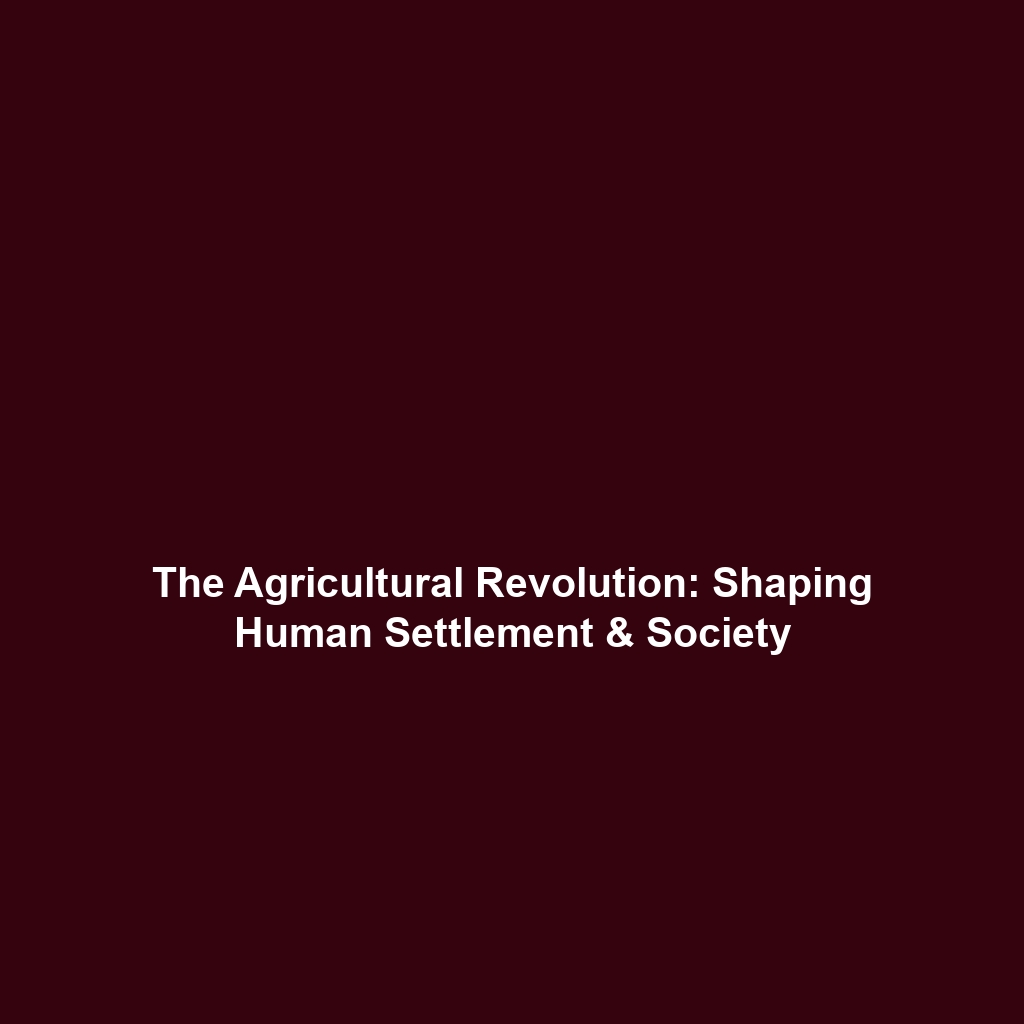Cultural Developments: The Rise of Agriculture and Its Impact on Human Evolution
Introduction
The rise of agriculture approximately 10,000 years ago marked a pivotal moment in human evolution. This transformative cultural development enabled early humans to transition from nomadic hunter-gatherer societies to settled agricultural communities. This shift not only influenced human settlement patterns but also set the stage for enhanced social complexity and technological advancements. Understanding this significant event is crucial for grasping the foundation of modern civilizations and the trajectory of human development.
Key Concepts
The Transition to Agriculture
The shift from hunting and gathering to agriculture was driven by various factors, including climate change and population pressures. Key concepts associated with this transition include:
- Domestication: The selective breeding of plants and animals for human benefit.
- Settlement: Establishing permanent homes leading to larger, stable communities.
- Social Complexity: The emergence of structured societies with distinct roles and hierarchies.
- Technological Innovation: Advancements in tools and techniques for farming, storage, and food processing.
Applications and Real-World Uses
The rise of agriculture has led to significant real-world applications in the realm of human evolution:
- Understanding how the establishment of farming techniques laid the groundwork for economic systems.
- Examining the social structures that arose from settled agricultural life, contributing to cultural identities.
- Implementing agricultural innovations that continue to evolve, such as sustainable farming practices.
The way agriculture is used in human evolution illustrates the interdependence of developed societies and their agricultural practices.
Current Challenges
While studying the rise of agriculture and its implications is essential, researchers face several challenges:
- Lack of Archaeological Evidence: Limited findings can hinder the full understanding of early agricultural practices.
- Environmental Changes: Shifts in climate complicate the analysis of agricultural development timelines.
- Societal Variability: Diverse agricultural practices across different regions challenge the creation of a universal narrative.
Future Research and Innovations
Emerging research is poised to enhance our understanding of agricultural impacts on human evolution:
- Genetic Studies: Investigating the genetic adaptations resulting from long-term agricultural practices.
- Technological Advancements: The development of precision agriculture and its effects on food production.
- Interdisciplinary Studies: Collaborations between archeology, anthropology, and environmental science to provide a comprehensive view of agriculture’s evolution.
Conclusion
The rise of agriculture around 10,000 years ago represents a cornerstone in human evolution, impacting settlement patterns, social structures, and technological advancements. This cultural development is essential for understanding contemporary society and our future trajectory. For further reading on human evolution and related topics, explore our other articles on agricultural innovations and their ongoing effects on human societies.

